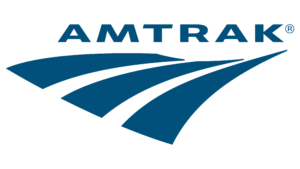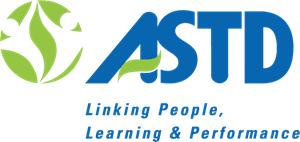Managing and
Supervising Effectively
Strategic Planning Essentials - Executing Success
Series: Enhancement Skills
Course: Strategic Planning Essentials - Executing Success
Have you looked at how your company develops strategy lately?
Is your organization poised to implement strategies that create value, generate growth and result in profits? Who thinks strategically in your firm? Strategy formation and strategic thinking have evolved...make sure your strategic thinking skills are keeping pace. You need to know the answers to these questions plus...what tools still work and continue to be useful in the development of strategy. What new approaches might give your organization a kick-start to move to a new level of high performance?
This course is designed to mesh the proven-by-practice with new insights and ideas from a wide range of current strategic thinking. Managers learn by doing and gain a wider perspective of management practice through breakout sessions, practice exercises and case applications. Bring your strategic dilemmas to this program and get direction on up-to-date analytical and organizational approaches to solutions.
With our Strategic Planning Essentials course you will gain an understanding as to when it’s time to re-think strategy or to re-invent your organization. Get a clear perspective on your organizational role in the development and implementation of successful strategies.
"Committed to continually improving management, team, and organization performance."
- How Participants Will Benefit
- Topics We Will Address
- Develop an understanding of how strategic thinking has developed and who has influenced the direction it has taken
- Identify the benefits—and pitfalls—of focusing on strategy
- Learn key analytical and conceptual approaches that can expand your strategic understanding of the marketplace
- Learn the different ways in which vision can be used in the organization
- Understand how to integrate strategy, objectives, metrics and performance
- Learn the new strategic patterns that are evolving in the business world and develop ideas for their application for your organization
- Discover when to use action plans to implement strategy and when a looser system is required
- How to structure the development of strategy for an organization
- How to ask strategic questions
- How to generate sufficient data and organize it into relevant information for use in developing strategy
- How your organization and the business environment in which it exists interact through strategy formation and implementation
- How resources reinforce strategic direction and influence results
- Positive means of engaging the organization in strategy formation and implementation
Strategic Planning Essentials - Executing Success
- Learning Objectives
- The Evolution of Strategic Thinking
- Overview of Strategy Formation
- Focus on Becoming—What Results Do We Want?
-
Assessing the Current Situation—External and
Market Environment -
Assessing the Current Situation—Where the Market
Meets the Company -
Assessing the Current Situation—Organizational and
Financial Assessment - Strategic Issues—Focal Point for Organizational Action
- Choosing Winning Strategies
- Creating and Aligning Goals and Objectives
- Moving Strategy into Daily Operations
-
Engaging the Organization in Strategy Development and
Implementation - Some Truths About Strategy
- Apply Learning from the Development of Strategic Thinking over the Past Forty Years to Your Company’s Future Planning
- Use a Basic Process for Developing Winning Strategies
- Leverage Both Analytical and Conceptual Approaches to Strategy Development in Your Firm
- Determine Which Basic Strategy Patterns for Growth and Profit Are a Best Fit for Your Organization
- Anticipate the Cyclical Interdependent Relationships between Strategy Formation and Strategy Implementation
- Understand Several Methods to Engage the Organization in the Formation of Strategy
- Recognize the Forty-Year Evolution of Strategic Thinking in Management Practice
- Address Strategy within Your Organization as a Process, as Well as Strategy as Content
- Combine Your Understanding of the Proscriptive Development of Strategy with the Emergent Action of an Organization
- Recognize and Understand Thought Commonalities of Strategy Schools
- Formulate Strategy in Your Organization with a Basic Process
- Apply the Key Process Elements of Formulating Strategy
- Ask Strategic Questions While Developing Your Firm’s Direction
- Plan Who Would Be Involved in the Creation of Strategy in Your Organization
- Anticipate How Long It Will Take for Strategy Formulation to Take Place in Your Organization
- Create a Shared Vision within Your Organization
- Identify Your Organization’s Mission, Vision and Values Whether or Not They Have Been Published
- Guide Strategic Questions and Suggest Actions for the Organization Based on the Identified Results Desired
- Choose an Approach to Determine What Results Are Desired for Your Organization
- Identify Environmental Forces That Will Impact Your Organization’s Strategy
- Determine the Market Forces Which Your Organization Faces
- Relate Environmental Change to Strategy Formation
- Anticipate and Plan Actions to Respond to the Influence of Factors Your Organization Cannot Control
- Relate Market Segments to Your Firm’s Sales and Marketing Efforts
- Identify Your Firm’s Strategic Triangle with Customers and Competition
- Apply an Importance/Performance Matrix to a Market Segment of Customers
- Define the Value Proposition That Your Firm Offers to Its Customers
- Assess Whether Your Firm Is a High-Performance Organization and Where Attention Is Needed to Improve Performance
- Identify the Degrees of Competing Values Established in Your Organization
- Link the Core Competencies of Your Organization to Your Distinctive Competencies and Competitive Advantages
- Gather Organizational Input for Strategy Formation and Assess Its Use
- Relate the Financial Performance of Your Firm to Strategy Formation and Implementation
- Convert Knowledge about the Organization into Identifiable, Actionable Priorities
- Conduct a Classic SWOT and Priority Issue Process
- Lead Your Organization to Focus on Strategy That Flows from Corporate Needs
- Relate a Situation Analysis to the Initiation of Strategy Formation
- Experience the Release of Strategic Direction from the Strategic Process of Situation Analysis
- Identify Your Firm’s Strategies at Different Levels of the Organization
- Link Strategic Actions across the Organization to Accomplish Specific Aims of Your Company
- Develop External and Internal Strategies to Support Your Company’s Grand Strategy
- Relate the Complexity of Your Firm to the Process of Strategy Formation and Implementation
- Match Your Firm’s Mission and Vision with Company Goals and Objectives
- Create Strategic Objectives, Milestones, Stage Gates, and Operational Metrics
- Use a Balanced Scorecard to Track Progress on Strategy Implementation
- Establish Company Alignment through Multiple Channels
- Create Accountability for Formulated Strategy and Maintain Progress
- Identify Good Project Leaders for Strategy Implementation
- Create Strategic Initiative Action Plans for Your Strategic Initiatives
- Create Departmental Action Plans
- Prepare and Conduct a Resource Allocation Review to Determine Final Priorities for Your Firm
- Recognize the Energizers for Change in Your Organization
- Assess Barriers to Change in Your Organization
- Assess Your Readiness to Become a Change Agent within Your Organization
- Identify the Current Potential for Change within Your Company
- Identify a Process for Strategy Formation for Your Company
- Reflect on Your Experience with Strategy Formulation
- Share Your Company’s Experience with Success and Failure in Strategy Formulation
- Recognize Some Universal Experiences in the Formation of Strategy










Contact
Pinnacle Performance
Improvement Worldwide
United States of America
